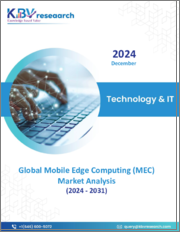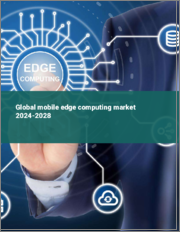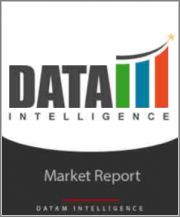
|
시장보고서
상품코드
1451630
모바일 엣지 컴퓨팅(MEC) 시장 보고서 : 컴포넌트, 조직 규모, 용도, 지역별(2024-2032년)Mobile Edge Computing Market Report by Component, Organization Size, Application, and Region 2024-2032 |
||||||
세계의 모바일 엣지 컴퓨팅(MEC) 시장 규모는 2023년에 8억 1,170만 달러에 달했습니다. 향후 IMARC Group은 시장이 2032년까지 55억 2,890만 달러에 달하며, 2024-2032년 23.05%의 성장률(CAGR)을 보일 것으로 예측하고 있습니다.
모바일 엣지 컴퓨팅(MEC)은 컴퓨팅, 스토리지, 대역폭 등 인프라 기반 클라우드 리소스를 셀룰러 네트워크의 엣지로 이동시키는 것을 목표로 하는 새로운 기술입니다. MEC는 라우터, 스위치, 핫스팟, WiFi, 서버, 컨트롤러 등 다양한 액세스 포인트를 사용하여 네트워크 에지를 구축하며, 위치 서비스, 비디오 모니터링, 통합 커뮤니케이션, 데이터 분석, 환경 모니터링 등에 널리 사용되고 있습니다. 활용되고 있습니다. 네트워크 전체에 컴퓨팅 리소스를 분산시켜 확장 가능한 성능을 제공하고, 네트워크 부하를 줄이며, 데이터 전송 속도를 높입니다. 또한 네트워크 혼잡과 대기 시간을 줄이고 장비 성능을 향상시킵니다. 그 결과 MEC는 소매, 통신, 에너지, 헬스케어 산업 등 다양한 분야에 적용되고 있습니다.
모바일 엣지 컴퓨팅(MEC) 시장 동향 :
MEC는 통신 사업자들이 클라우드에 대한 의존도를 낮추고, 디바이스에서 생성되는 대량의 데이터를 처리할 수 있도록 지원하는 MEC를 통해 전 세계 통신 산업의 괄목할 만한 성장으로 인해 시장 전망을 밝게 하고 있습니다. 이에 따라 체감 품질(QoE) 향상, 저지연 컴퓨팅 제공, 운영 효율성 향상을 목표로 하는 기술이 다양한 산업 분야에서 널리 채택되고 있으며, 시장 성장을 촉진하고 있습니다. 또한 스마트폰과 상호 연결된 기기의 급속한 보급으로 인해 방대한 데이터 트래픽을 관리해야 할 필요성이 증가하고 있는 것도 성장의 원동력이 되고 있습니다. 또한 인공지능(AI), 사물인터넷(IoT), 협동학습(FL)과 같은 신기술에서 전력 소비를 줄이고, 응답 시간을 개선하고, 높은 대역폭을 제공하여 성능을 향상시키기 위해 MEC의 사용이 증가하고 있는 것도 시장 성장의 원동력이 되고 있습니다. 이러한 솔루션에 대한 수요 증가는 자동화와 확장성, 프라이버시 및 보안, 그리고 상당한 비용 절감을 통해 5세대(5G) 기술의 확장을 촉진할 수 있는 5세대(5G) 기술에 대한 수요 증가에 기인합니다. 이 밖에도 새로운 하드웨어 개발을 위한 광범위한 조사개발(R&D) 활동과 증강현실(AR/VR) 및 가상현실(AR/VR) 분야의 새로운 제품 용도이 시장 성장을 가속할 것으로 예상됩니다.
이 보고서에서 다룬 주요 질문
- 2023년 세계 모바일 엣지 컴퓨팅(MEC) 시장 규모는?
- 2024-2032년 세계 모바일 엣지 컴퓨팅(MEC) 시장 예상 성장률은?
- 세계 모바일 엣지 컴퓨팅(MEC) 시장을 촉진하는 주요 요인은?
- COVID-19가 세계 모바일 엣지 컴퓨팅(MEC) 시장에 미친 영향은?
- 세계 모바일 엣지 컴퓨팅(MEC) 시장의 컴포넌트별 분류는?
- 조직 규모별 세계의 모바일 엣지 컴퓨팅(MEC) 시장 현황은?
- 세계의 모바일 엣지 컴퓨팅(MEC) 시장 용도별 분류는?
- 세계 모바일 엣지 컴퓨팅(MEC) 시장의 주요 지역은?
- 세계 모바일 엣지 컴퓨팅(MEC) 시장의 주요 기업은?
목차
제1장 서문
제2장 조사 범위와 조사 방법
- 조사 목적
- 이해관계자
- 데이터 소스
- 1차 정보
- 2차 정보
- 시장 추정
- 보텀업 어프로치
- 톱다운 어프로치
- 조사 방법
제3장 주요 요약
제4장 서론
- 개요
- 주요 산업 동향
제5장 세계의 모바일 엣지 컴퓨팅(MEC) 시장
- 시장 개요
- 시장 실적
- COVID-19의 영향
- 시장 예측
제6장 시장 내역 : 컴포넌트별
- 하드웨어
- 시장 동향
- 시장 예측
- 소프트웨어
- 시장 동향
- 시장 예측
제7장 시장 내역 : 조직 규모별
- 중소기업
- 시장 동향
- 시장 예측
- 대기업
- 시장 동향
- 시장 예측
제8장 시장 내역 : 용도별
- 위치 기반 서비스
- 시장 동향
- 시장 예측
- 비디오 감시
- 시장 동향
- 시장 예측
- 통합 커뮤니케이션
- 시장 동향
- 시장 예측
- 최적화 로컬 컨텐츠 전송
- 시장 동향
- 시장 예측
- 데이터 분석
- 시장 동향
- 시장 예측
- 환경 모니터링
- 시장 동향
- 시장 예측
제9장 시장 내역 : 지역별
- 북미
- 미국
- 시장 동향
- 시장 예측
- 캐나다
- 시장 동향
- 시장 예측
- 미국
- 아시아태평양
- 중국
- 시장 동향
- 시장 예측
- 일본
- 시장 동향
- 시장 예측
- 인도
- 시장 동향
- 시장 예측
- 한국
- 시장 동향
- 시장 예측
- 호주
- 시장 동향
- 시장 예측
- 인도네시아
- 시장 동향
- 시장 예측
- 기타
- 시장 동향
- 시장 예측
- 중국
- 유럽
- 독일
- 시장 동향
- 시장 예측
- 프랑스
- 시장 동향
- 시장 예측
- 영국
- 시장 동향
- 시장 예측
- 이탈리아
- 시장 동향
- 시장 예측
- 스페인
- 시장 동향
- 시장 예측
- 러시아
- 시장 동향
- 시장 예측
- 기타
- 시장 동향
- 시장 예측
- 독일
- 라틴아메리카
- 브라질
- 시장 동향
- 시장 예측
- 멕시코
- 시장 동향
- 시장 예측
- 기타
- 시장 동향
- 시장 예측
- 브라질
- 중동 및 아프리카
- 시장 동향
- 시장 내역 : 국가별
- 시장 예측
제10장 SWOT 분석
- 개요
- 강점
- 약점
- 기회
- 위협
제11장 밸류체인 분석
제12장 Porter's Five Forces 분석
- 개요
- 구매자의 교섭력
- 공급 기업의 교섭력
- 경쟁의 정도
- 신규 진출업체의 위협
- 대체품의 위협
제13장 가격 분석
제14장 경쟁 구도
- 시장 구조
- 주요 기업
- 주요 기업의 개요
- ADLINK Technology Inc.
- Advantech Co. Ltd.
- Artesyn Embedded Technologies(Advanced Energy Industries Inc.)
- AT&T Inc.
- Cisco Systems Inc.
- Huawei Technologies Co. Ltd.
- Intel Corporation
- International Business Machines Corporation
- Nokia Corporation
- Saguna Networks Ltd.(COMSovereign Holding Corp)
- Telefonaktiebolaget LM Ericsson
- Vapor IO Inc.
- Vodafone Group Plc
The global mobile edge computing (MEC) market size reached US$ 811.7 Million in 2023. Looking forward, IMARC Group expects the market to reach US$ 5,528.9 Million by 2032, exhibiting a growth rate (CAGR) of 23.05% during 2024-2032.
Mobile edge computing (MEC) is an emerging technology that aims to move infrastructure-based cloud resources, such as computation, storage, and bandwidth, to the edge of the cellular network. It establishes the network edge by utilizing various access points, such as routers, switches, hotspots, WiFi, servers, and controllers. MEC is widely used in location-based services, video surveillance, unified communication, data analytics, and environmental monitoring. It distributes computing resources across the network, provides more scalable performance, reduces network load, and hastens data transmission. It also reduces network congestion and latency and improves device performance. As a result, MEC finds extensive applications across the retail, telecommunications, energy, and healthcare industries.
Mobile Edge Computing (MEC) Market Trends:
Significant growth in the telecommunications industry across the globe is creating a positive outlook for the market. MEC enables telecommunication businesses to lessen their reliance on the cloud and assist in processing large volumes of data generated by devices. In line with this, the widespread technology adoption in various industrial verticals to improve quality of experience (QoE), provide low latency computing, and enhance operational efficiency is favoring the market growth. Furthermore, the growing need to manage enormous data traffic due to the rapid proliferation of smartphones and interconnected devices is acting as another growth-inducing factor. Additionally, the rising MEC utilization in emerging technologies, such as artificial intelligence (AI), the Internet of Things (IoT), and federated learning (FL) to reduce power consumption, improve response time, and enhance performance by offering higher bandwidth is providing an impetus to market growth. The increasing demand for the solution can also be attributed to the rising need to facilitate the expansion of fifth-generation (5G) technology by enabling automation and scalability, providing privacy and security, and ensuring significant cost savings. Other factors, including extensive research and development (R&D) activities towards developing new hardware, and emerging product applications in augmented and virtual reality (AR/VR), are anticipated to drive the market growth.
Key Market Segmentation:
IMARC Group provides an analysis of the key trends in each sub-segment of the global mobile edge computing (MEC) market report, along with forecasts at the global, regional and country level from 2024-2032. Our report has categorized the market based on component, organization size and application.
Breakup by Component:
Hardware
Software
Breakup by Organization Size:
Small and Medium Enterprises
Large Enterprises
Breakup by Application:
Location-based Services
Video Surveillance
Unified Communication
Optimized Local Content Distribution
Data Analytics
Environmental Monitoring
Breakup by Region:
North America
United States
Canada
Asia-Pacific
China
Japan
India
South Korea
Australia
Indonesia
Others
Europe
Germany
France
United Kingdom
Italy
Spain
Russia
Others
Latin America
Brazil
Mexico
Others
Middle East and Africa
Competitive Landscape:
The competitive landscape of the industry has also been examined along with the profiles of the key players being ADLINK Technology Inc., Advantech Co. Ltd., Artesyn Embedded Technologies (Advanced Energy Industries Inc.), AT&T Inc., Cisco Systems Inc., Huawei Technologies Co. Ltd., Intel Corporation, International Business Machines Corporation, Nokia Corporation, Saguna Networks Ltd. (COMSovereign Holding Corp), Telefonaktiebolaget LM Ericsson, Vapor IO Inc. and Vodafone Group Plc.
Key Questions Answered in This Report
- 1. What was the size of the global Mobile Edge Computing (MEC) market in 2023?
- 2. What is the expected growth rate of the global Mobile Edge Computing (MEC) market during 2024-2032?
- 3. What are the key factors driving the global Mobile Edge Computing (MEC) market?
- 4. What has been the impact of COVID-19 on the global Mobile Edge Computing (MEC) market?
- 5. What is the breakup of the global Mobile Edge Computing (MEC) market based on the component?
- 6. What is the breakup of the global Mobile Edge Computing (MEC) market based on organization size?
- 7. What is the breakup of the global Mobile Edge Computing (MEC) market based on the application?
- 8. What are the key regions in the global Mobile Edge Computing (MEC) market?
- 9. Who are the key players/companies in the global Mobile Edge Computing (MEC) market?
Table of Contents
1 Preface
2 Scope and Methodology
- 2.1 Objectives of the Study
- 2.2 Stakeholders
- 2.3 Data Sources
- 2.3.1 Primary Sources
- 2.3.2 Secondary Sources
- 2.4 Market Estimation
- 2.4.1 Bottom-Up Approach
- 2.4.2 Top-Down Approach
- 2.5 Forecasting Methodology
3 Executive Summary
4 Introduction
- 4.1 Overview
- 4.2 Key Industry Trends
5 Global Mobile Edge Computing (MEC) Market
- 5.1 Market Overview
- 5.2 Market Performance
- 5.3 Impact of COVID-19
- 5.4 Market Forecast
6 Market Breakup by Component
- 6.1 Hardware
- 6.1.1 Market Trends
- 6.1.2 Market Forecast
- 6.2 Software
- 6.2.1 Market Trends
- 6.2.2 Market Forecast
7 Market Breakup by Organization Size
- 7.1 Small and Medium Enterprises
- 7.1.1 Market Trends
- 7.1.2 Market Forecast
- 7.2 Large Enterprises
- 7.2.1 Market Trends
- 7.2.2 Market Forecast
8 Market Breakup by Application
- 8.1 Location-based Services
- 8.1.1 Market Trends
- 8.1.2 Market Forecast
- 8.2 Video Surveillance
- 8.2.1 Market Trends
- 8.2.2 Market Forecast
- 8.3 Unified Communication
- 8.3.1 Market Trends
- 8.3.2 Market Forecast
- 8.4 Optimized Local Content Distribution
- 8.4.1 Market Trends
- 8.4.2 Market Forecast
- 8.5 Data Analytics
- 8.5.1 Market Trends
- 8.5.2 Market Forecast
- 8.6 Environmental Monitoring
- 8.6.1 Market Trends
- 8.6.2 Market Forecast
9 Market Breakup by Region
- 9.1 North America
- 9.1.1 United States
- 9.1.1.1 Market Trends
- 9.1.1.2 Market Forecast
- 9.1.2 Canada
- 9.1.2.1 Market Trends
- 9.1.2.2 Market Forecast
- 9.1.1 United States
- 9.2 Asia-Pacific
- 9.2.1 China
- 9.2.1.1 Market Trends
- 9.2.1.2 Market Forecast
- 9.2.2 Japan
- 9.2.2.1 Market Trends
- 9.2.2.2 Market Forecast
- 9.2.3 India
- 9.2.3.1 Market Trends
- 9.2.3.2 Market Forecast
- 9.2.4 South Korea
- 9.2.4.1 Market Trends
- 9.2.4.2 Market Forecast
- 9.2.5 Australia
- 9.2.5.1 Market Trends
- 9.2.5.2 Market Forecast
- 9.2.6 Indonesia
- 9.2.6.1 Market Trends
- 9.2.6.2 Market Forecast
- 9.2.7 Others
- 9.2.7.1 Market Trends
- 9.2.7.2 Market Forecast
- 9.2.1 China
- 9.3 Europe
- 9.3.1 Germany
- 9.3.1.1 Market Trends
- 9.3.1.2 Market Forecast
- 9.3.2 France
- 9.3.2.1 Market Trends
- 9.3.2.2 Market Forecast
- 9.3.3 United Kingdom
- 9.3.3.1 Market Trends
- 9.3.3.2 Market Forecast
- 9.3.4 Italy
- 9.3.4.1 Market Trends
- 9.3.4.2 Market Forecast
- 9.3.5 Spain
- 9.3.5.1 Market Trends
- 9.3.5.2 Market Forecast
- 9.3.6 Russia
- 9.3.6.1 Market Trends
- 9.3.6.2 Market Forecast
- 9.3.7 Others
- 9.3.7.1 Market Trends
- 9.3.7.2 Market Forecast
- 9.3.1 Germany
- 9.4 Latin America
- 9.4.1 Brazil
- 9.4.1.1 Market Trends
- 9.4.1.2 Market Forecast
- 9.4.2 Mexico
- 9.4.2.1 Market Trends
- 9.4.2.2 Market Forecast
- 9.4.3 Others
- 9.4.3.1 Market Trends
- 9.4.3.2 Market Forecast
- 9.4.1 Brazil
- 9.5 Middle East and Africa
- 9.5.1 Market Trends
- 9.5.2 Market Breakup by Country
- 9.5.3 Market Forecast
10 SWOT Analysis
- 10.1 Overview
- 10.2 Strengths
- 10.3 Weaknesses
- 10.4 Opportunities
- 10.5 Threats
11 Value Chain Analysis
12 Porters Five Forces Analysis
- 12.1 Overview
- 12.2 Bargaining Power of Buyers
- 12.3 Bargaining Power of Suppliers
- 12.4 Degree of Competition
- 12.5 Threat of New Entrants
- 12.6 Threat of Substitutes
13 Price Analysis
14 Competitive Landscape
- 14.1 Market Structure
- 14.2 Key Players
- 14.3 Profiles of Key Players
- 14.3.1 ADLINK Technology Inc.
- 14.3.1.1 Company Overview
- 14.3.1.2 Product Portfolio
- 14.3.2 Advantech Co. Ltd.
- 14.3.2.1 Company Overview
- 14.3.2.2 Product Portfolio
- 14.3.3 Artesyn Embedded Technologies (Advanced Energy Industries Inc.)
- 14.3.3.1 Company Overview
- 14.3.3.2 Product Portfolio
- 14.3.4 AT&T Inc.
- 14.3.4.1 Company Overview
- 14.3.4.2 Product Portfolio
- 14.3.5 Cisco Systems Inc.
- 14.3.5.1 Company Overview
- 14.3.5.2 Product Portfolio
- 14.3.6 Huawei Technologies Co. Ltd.
- 14.3.6.1 Company Overview
- 14.3.6.2 Product Portfolio
- 14.3.7 Intel Corporation
- 14.3.7.1 Company Overview
- 14.3.7.2 Product Portfolio
- 14.3.8 International Business Machines Corporation
- 14.3.8.1 Company Overview
- 14.3.8.2 Product Portfolio
- 14.3.9 Nokia Corporation
- 14.3.9.1 Company Overview
- 14.3.9.2 Product Portfolio
- 14.3.10 Saguna Networks Ltd. (COMSovereign Holding Corp)
- 14.3.10.1 Company Overview
- 14.3.10.2 Product Portfolio
- 14.3.11 Telefonaktiebolaget LM Ericsson
- 14.3.11.1 Company Overview
- 14.3.11.2 Product Portfolio
- 14.3.12 Vapor IO Inc.
- 14.3.12.1 Company Overview
- 14.3.12.2 Product Portfolio
- 14.3.13 Vodafone Group Plc
- 14.3.13.1 Company Overview
- 14.3.13.2 Product Portfolio
- 14.3.1 ADLINK Technology Inc.



















